Trees, Shrubs and Woody Vines
Media
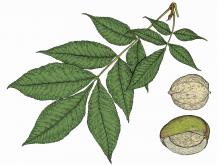
Species Types
Scientific Name
Carya laciniosa
Description
Shellbark hickory is the largest of the true hickories and has the best-tasting hickory nuts in Missouri. Compared to shagbark hickory, it has larger leaves and more leaflets, plus larger nuts and orange twigs.
Media
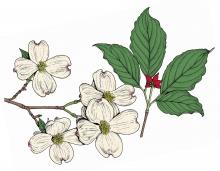
Species Types
Scientific Name
Cornus florida
Description
Flowering dogwood is a beautiful shrub to small tree with a straggling, spreading crown. Missouri’s official state tree, it presents lovely boughs of white inflorescences in springtime forests.
Media

Species Types
Scientific Name
Ilex decidua
Description
Possum haw, or deciduous holly, is the more common of two native Missouri hollies that lose their leaves each fall. This shrub or small tree is eye-catching in the fall and winter with its bright red berries.
Media

Species Types
Scientific Name
Celtis occidentalis
Description
Common hackberry is named for its sweet, purple, edible fruits, but most people identify hackberry with its weird-looking bark, which develops numerous corky, wartlike projections and ridges.
Media

Species Types
Scientific Name
Lonicera japonica
Description
Don’t kid yourself about this invasive, exotic vine: Japanese honeysuckle is an aggressive colonizer that shades out native plants and harms natural communities. Learn how to recognize it!
Media

Species Types
Scientific Name
Campsis radicans
Description
Each summer, the bright orange and red “trumpets” of this woody vine decorate Missouri’s cliff faces, telephone poles, and anything else strong enough to support it. Hummingbirds zoom to trumpet creeper’s flowers for their nectar.
Media
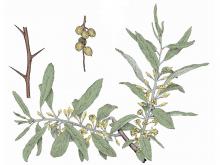
Species Types
Scientific Name
Elaeagnus angustifolia
Description
Russian olive is a small tree with distinctive silvery leaves. It was introduced to America in the late 1800s and widely planted as an ornamental and windbreak. But in many states it has proven to be invasive. It is not recommended here in Missouri.
Media
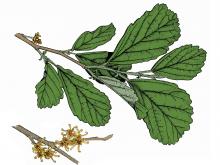
Species Types
Scientific Name
Hamamelis vernalis
Description
Ozark witch-hazel is a large native shrub that grows along dry, rocky streambeds in southern and east-central Missouri. The yellow, ribbonlike flowers bloom as early as January. In the fall, the seeds are ejected forcefully, to a distance of up to 30 feet!
Media

Species Types
Scientific Name
Rosa setigera
Description
Also called climbing rose, prairie rose is most common near woodlands, where it climbs and trails on neighboring shrubs and small trees.
Media
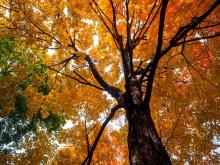
Species Types
Scientific Name
Acer spp.
Description
Missouri has five species of maples that are either native or naturalized, plus several that are known only in cultivation. Maples are important members of native ecosystems. They also provide stunning fall color, welcome shade in summer, commercially important lumber, and sap for syrup.
See Also
About Trees, Shrubs and Woody Vines in Missouri
There are no sharp dividing lines between trees, shrubs, and woody vines, or even between woody and nonwoody plants. “Wood” is a type of tissue made of cellulose and lignin that many plants develop as they mature — whether they are “woody” or not. Trees are woody plants over 13 feet tall with a single trunk. Shrubs are less than 13 feet tall, with multiple stems. Vines require support or else sprawl over the ground.





















